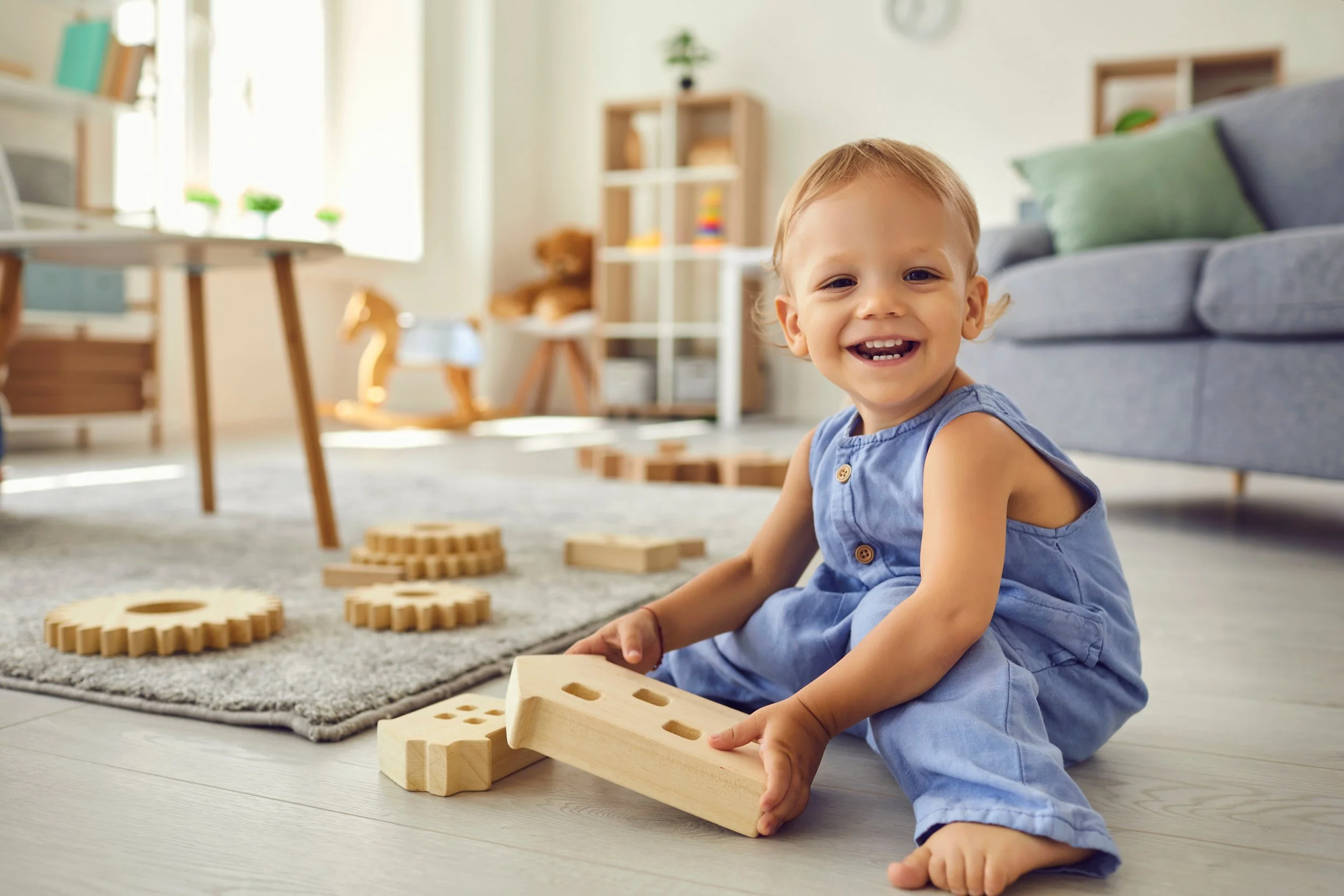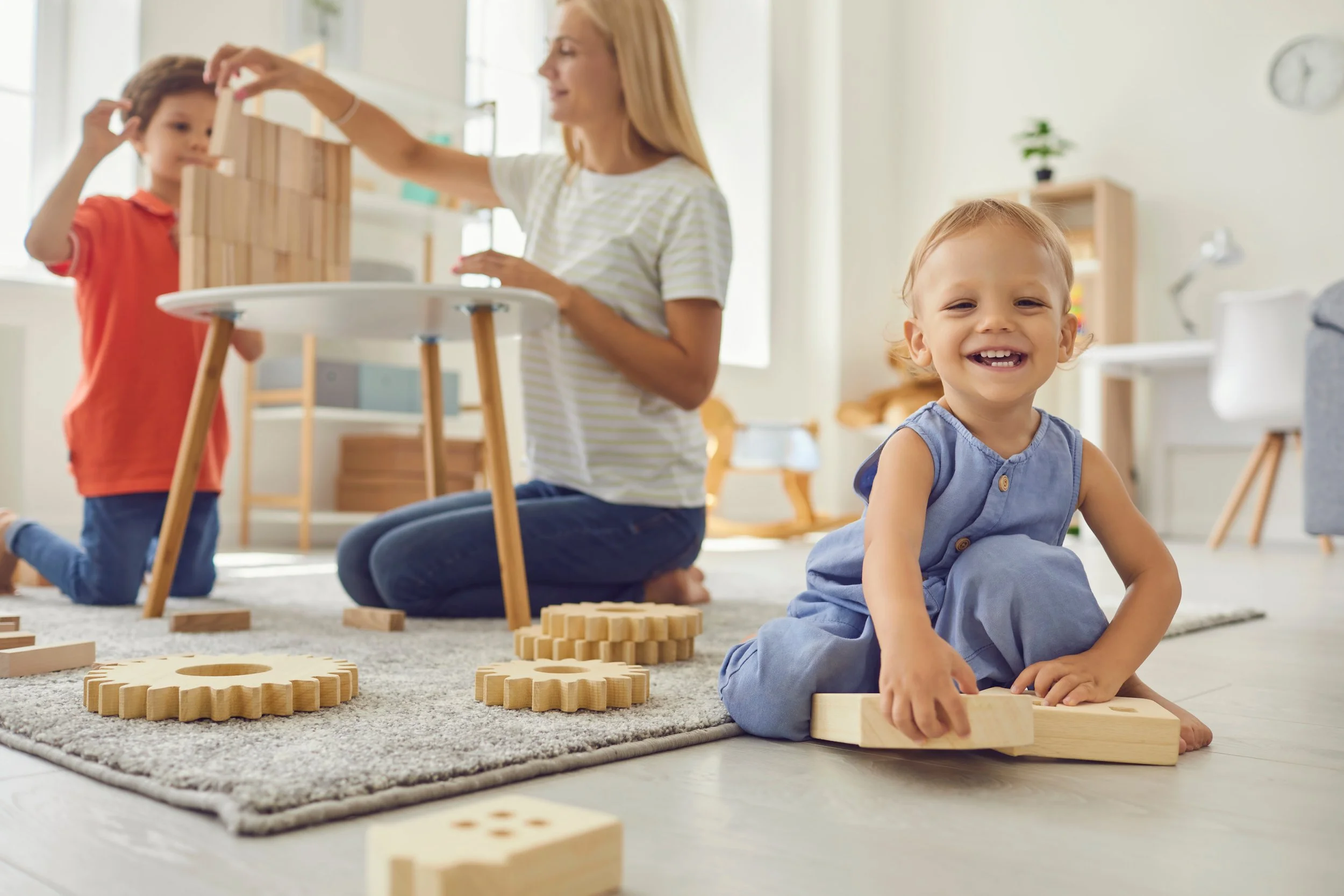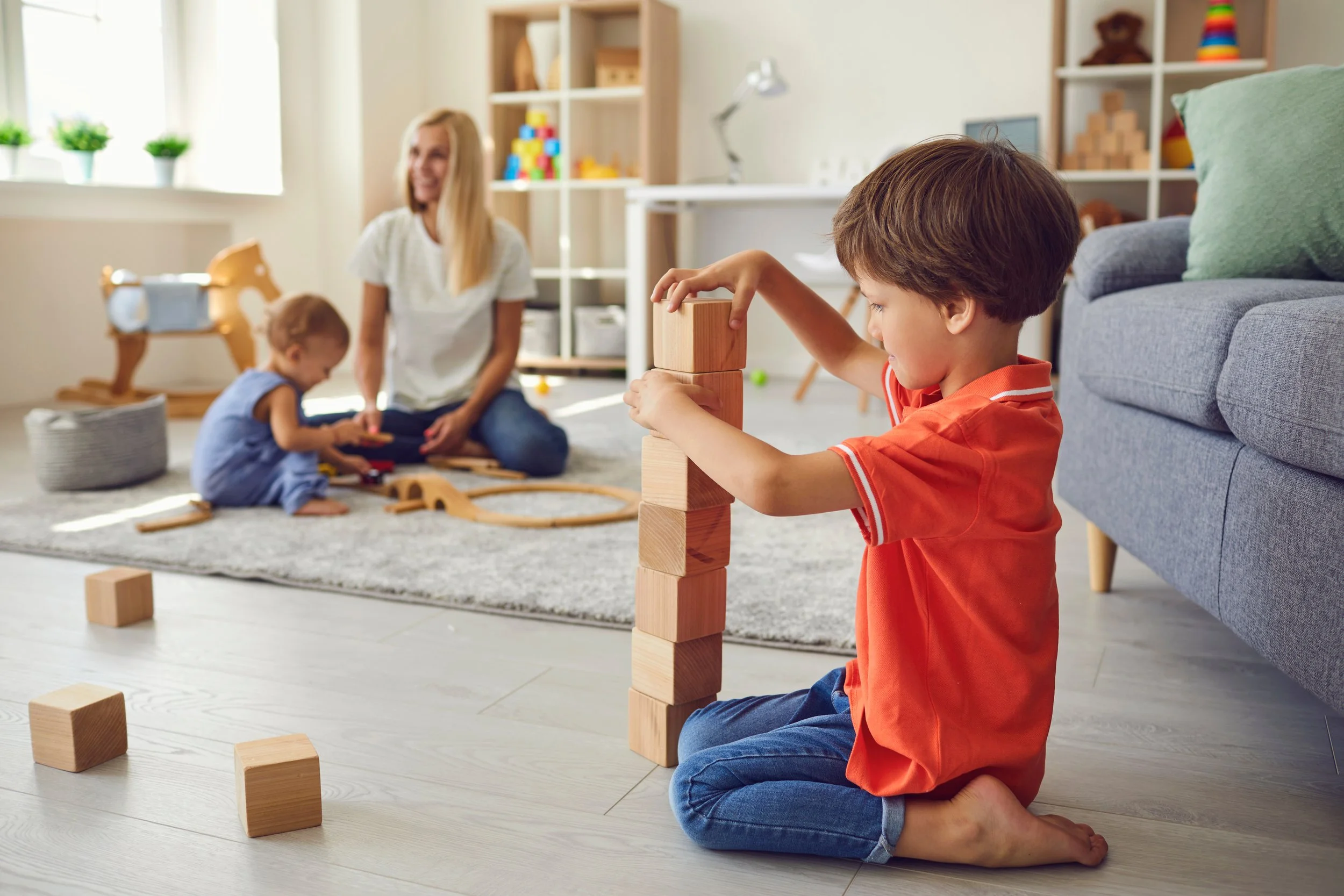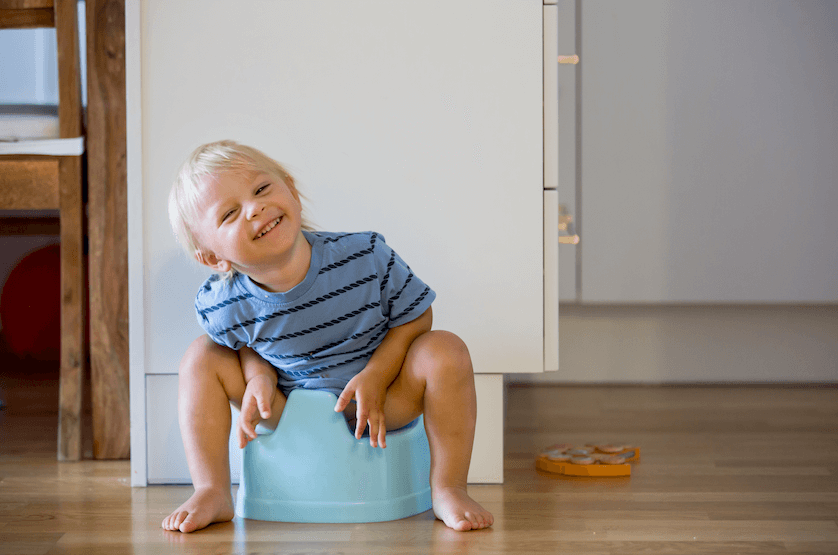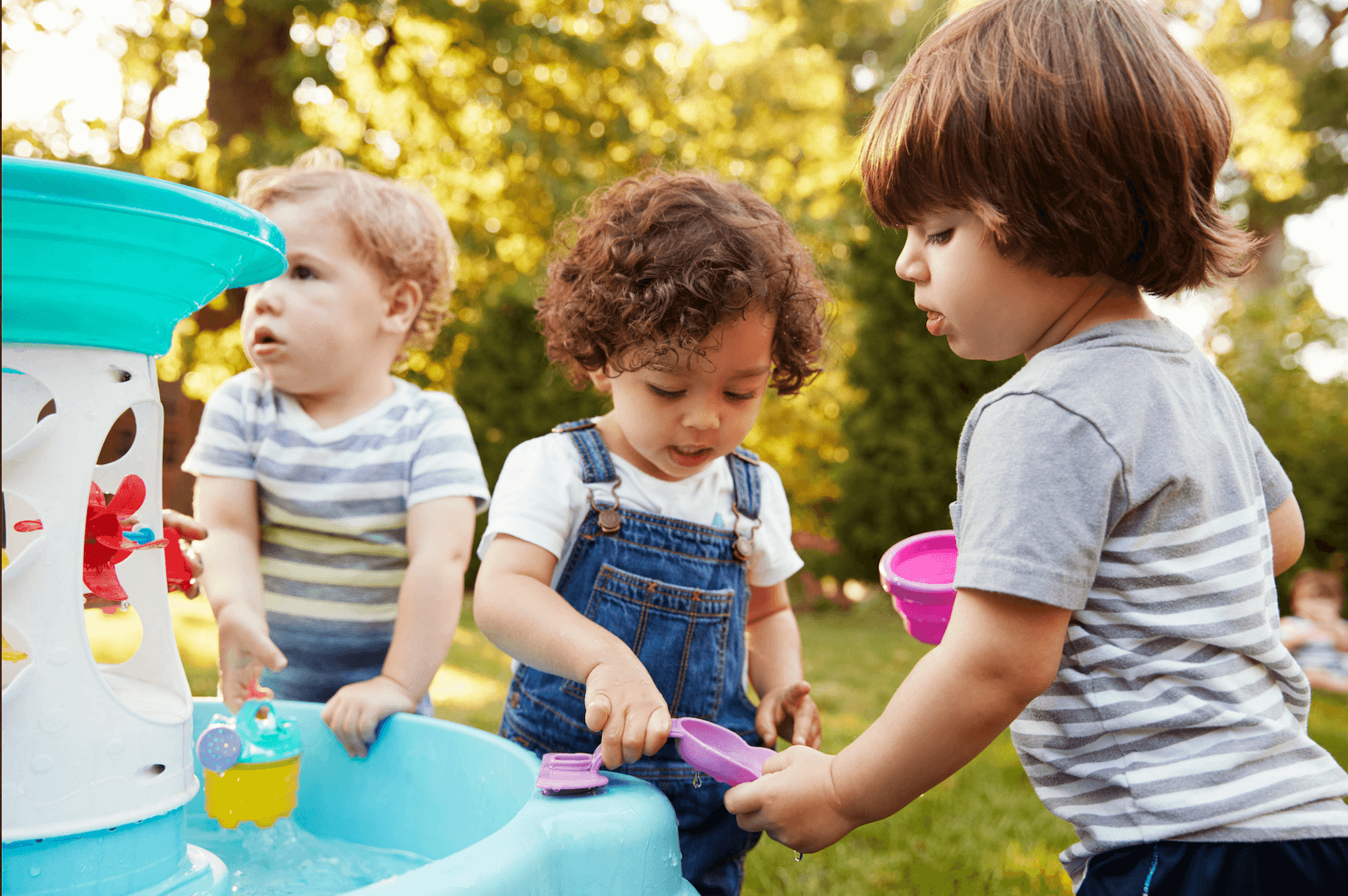Play + Language Developing Together
Speech therapists love to talk about play. And not just because we love to buy fun toys to use in therapy (which we do.) Speech therapists are interested in play because language development and play in children typically go hand in hand.
While your child is on their journey through different stages of play (see this post about stages of play), here are some tips and tricks to help you play together.
First, let’s quickly explore how are play and language related?
Without getting too technical, play development goes hand in hand with ongoing language development. When children develop new play skills, they often develop new language skills at the same time. For example, when children can do two-step pretend play (for example, pretending to stir a pitcher of lemonade and then pretending to pour it into cups), that is about the same time that a child will start to put 2 words together. More advanced language (such as the development of past tense and long sentences) is mirrored in the development of longer, better planned play routines.
There is an important similarity between play and language that contributes to their connection. Both play and language reflect a child’s understanding that one thing can represent another. In language, words are a bunch of strange sounds that we make with our mouths. But our brains have learned that certain sets of sounds mean different things. For example, we know that an “H” sound followed by an “I” sound (“hi!”) is a way of greeting another person. Similarly, in play a baby doll represents a real person.
For children with delays in language, watching the way that they play can give a speech therapist ideas for why a child isn’t talking and how to best help them.
Choosing the best toys and activities based on your child’s play level
Choosing toys can sometimes be a tricky process. As parents we always want a toy our child can play with today, but also a toy that will help our little one be ready to move to the next stage of play. It is important that parents understand what the play expectation is for their child’s age so that they and their child can have fun playing together. To find out which stage of play your child is at based on their age, refer to this post.
When picking toys, we always suggest keeping in mind the following things:
Pick toys that match your child’s play level.
Your 10 month-old isn’t going to appreciate a $200 designer doll, they are simply going to put it in their mouth. Instead pick objects that are safe and interesting to mouth. In contrast, a three-year-old is no longer at a stage where a light-up toy with buttons is engaging.
Many toys can be used for multiple stages of play.
For example, plastic farm animals can be banged on a tray by a 10-month-old, put in a plastic bus and pushed by a 24-month-old, or live on a farm constructed out of blocks by a 3-year-old.
Some toys aren’t toys.
Here at Toddler Talk we are big fans of cheap plastic food storage containers, socks, blankets, and empty cups. A 14-month-old might enjoy a game where you hide a spoon inside a sock and they reach inside and look for it. A 30-month-old might like a game where you show them how small animals can use socks as sleeping bags. A 3-year-old will like seeing you put your hand in the sock and make it a talking puppet and then will copy you.
How do I help my toddler play?
In all stages of play, children will typically copy before they do something on their own. To help your child play, show them things they can do with objects so that they can copy you. Here are some tips:
Play at their developmental level.
Your child will be most successful copying you if you show them a play activity at their level. For example, your 12-month-old won’t make action figures walk and talk. But they might copy you putting an action figure in a cup and then dumping it out. Refer to our post about play stages to see how babies and toddlers play with objects.
Toy for you, toy for them.
If your child is young and not great at taking turns, sometimes it helps to have two of something so they can hold one and you can hold one. If you are throwing foam balls at a bucket together, everyone might be more successful if you each have your own ball.
Imitate them, and add one thing.
If you want to see if your child can make their play a little more complicated, copy what they just did and add one more simple step. If your baby shakes a toy, you can shake the toy and then bang it on the table. If your toddler uses a washcloth to tuck in their toy dog, tuck in the toy dog and then give it a kiss. If your preschooler buries a marble in play dough, you bury a marble and then have a toy dog dig it up. Even if your child doesn’t copy your second step, you are helping show them ideas to advance their play.
Add language.
Whatever play you are showing your child, make statements about what you are doing. You might say, shake shake when shaking a rattle. Or you might make a simple sentence when your toddler tries to put their socks on their stuffed animal (You put his socks on!) For older toddlers and preschoolers, you can try giving dialogue to characters in play. For example, maybe the dog says, “Wahh, my feet are cold! Can I please have some socks?”
Written By: Stephanie Burgner-Vader, MA CCC-SLP
Here are some other common parent questions:
-
Of course!
Follow this link to see our list of play ideas with common toys and items, plus how you can grow language while you play!
-
Keep exploring with our latest blog posts:
References List:
https://www.canr.msu.edu/news/the_power_of_play_part_5_adult_roles_in_childs_play
Westby, Carol E. Assessment of Cognitive and Language Abilities Through Play. Language, Speech, and Hearing Services in Schools. Jul 1980.
Parten MB. Social Participation among Preschool Children. Journal of Abnormal and Social Psychology. 1932; 27 (3): 243–269.
© 2020-2025. Stephanie Keffer Hatleli, MS CCC-SLP. All Rights Reserved.The content offered on ToddlerTalk.com is for informational purposes only. Toddler Talk is not engaged in rendering professional advice, whether medical or otherwise, to individual users or their children or families. No content on this site, regardless of date, should ever be used as a substitute for direct medical advice from your doctor, speech language pathologist, or other health professional. By accessing the content on ToddlerTalk.com, you acknowledge and agree that you are accepting the responsibility for your child’s health and well-being. In return for providing you with information related to home speech and language practice, you waive any claims that you or your child may have as a result of utilizing the content on ToddlerTalk.com.


